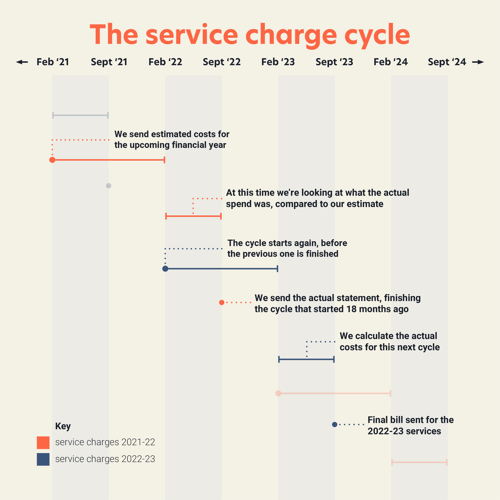The service charge cycle
Before the financial year begins, we estimate how much we’re going to need to pay in keeping your communal areas, estates, and neighbourhoods maintained and safe. With around 40,000 homes, there’s a lot of calculation needed for estimating the costs. We do this by looking at works we already have planned (like fire safety works), general maintenance costs (like gardening and other grounds works) and by also looking at inflation, and other costs for each area. Each area and even home is different.
At the end of the financial year, we then look at what we actually spent, and compare that to the estimate we made. If we spent more, that causes a deficit, which means customers are required to pay the difference. How this is paid will vary between tenure types (see below). If we spent less, there is a surplus, and we’ll arrange a refund. We write to each customer that pays service charges, to advise them of the actual costs and if they have a deficit or surplus.
Tenants
Typically, a tenant’s deficit/surplus will be added to their next financial years’ estimated service charge. When we calculate the estimated service charges (before the financial year begins), we’ll add any deficit or surplus from the last actual. So, if you have a deficit in September, it’s added on to the annual estimate for the following year and paid over time. If you have a surplus, we take it away.
Shared owners, freeholders, and leaseholders.
These customers are expected to pay the deficit right away, however payment agreements can be made with the Income team, and it’s paid in instalments.
Fixed service charges
Some customers are on fixed service charges. This means they only get an estimate each February stating how much they need to pay each week/month. They won’t receive an actual statement in September.
If you’re on fixed service charges, it will say so in your tenancy agreement.
(Click to enlarge)

